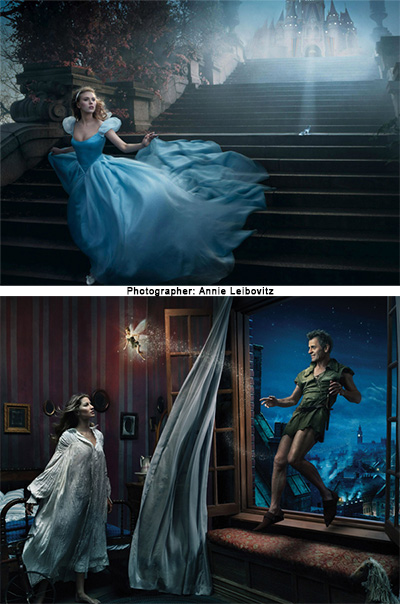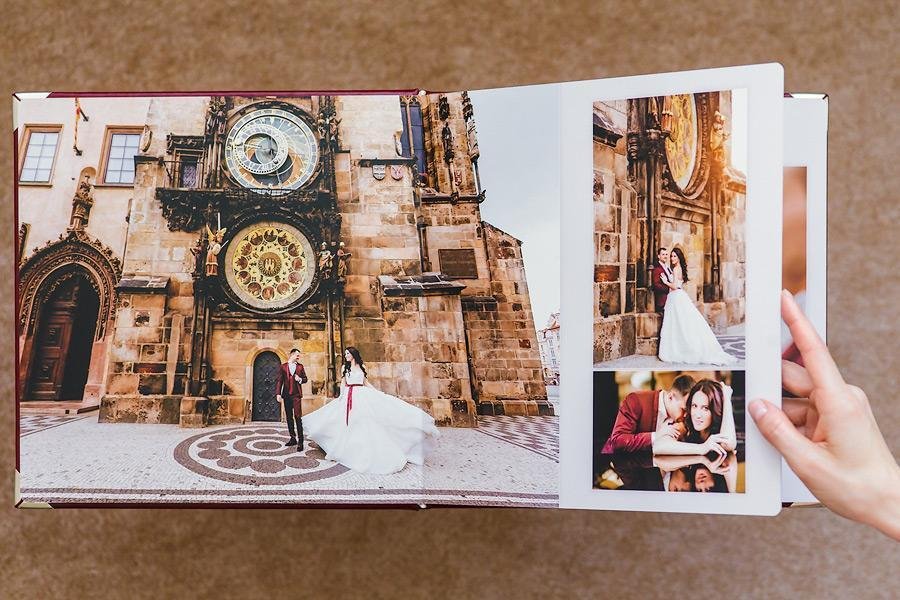Fortunately for photographers, the widespread use of Instagram has made posing much easier and more accessible. Nowadays, girls already know about the “working side,” seductively glance sideways and downwards, pout their lips, and accentuate their curves. All that’s left for the photographer is to tweak a few things :)
Portrait photography is a complex genre. It’s not just about mastering the camera and skillfully adjusting numerous settings. The primary task of a portrait photographer is to communicate with the model. And by “model,” we don’t mean a glossy magazine cover girl or someone with a modeling career. In photographer terminology, a model is simply the person being photographed. Whether it’s your neighbor, friend, grandmother, or brother – they all become models when they step in front of the camera.
So,
Portrait Photography tips start with...
01.
Achieving a level of proficiency in shooting techniques where they become automatic.02.
Exploring light and how it influences perception.Portrait photography is all about light.
Observe light everywhere you go. Don’t take pictures with your camera, just mentally note it. Make short notes on your phone.
When you’re on the tram, observe the faces of passengers and how the side light falls on them. Notice what happens when people turn away from the window or when the sunlight reflects off a passing car and onto their hair.
Step into an archway – stop and see how the light falls on faces as people enter and exit the archway, how it changes as they move along the passage.
Sit in a cafe with friends – look around at how light from different sources falls on patrons. Notice how perception changes with the light’s temperature.
As you walk through the city, put your phone away and observe the world around you. Portrait photography is VERY much about observing people.
Waiting for a date? Don’t bury yourself in Facebook, study the light around you instead.
Watch acclaimed classic films, especially those awarded for cinematography. Pause periodically and take screenshots, saving them in a special folder.
Visit galleries of classical paintings or browse albums with reproductions. Analyze where the light falls and what pattern it creates.
Recommendation: At this stage, don’t study studio photographs, especially those using more than three devices. It will only confuse you. Besides, these schemes are not applicable in everyday life.

Let’s delve into more nuanced aspects of “portrait photography tips.”
Photographing a portrait involves much more than just capturing a person’s image. It’s about mastering composition, directing poses, eliciting genuine expressions, and weaving a narrative through your images. Let’s explore these essential elements of portrait photography further.

03.
Preparing for a portrait photoshoot is essential for capturing stunning images that truly resonate.Preparing for a portrait photoshoot requires careful consideration and planning. Simply grabbing your neighbor and heading out to her backyard for a quick photoshoot won’t guarantee a beautiful portrait. While you can certainly take pictures on the fly, the likelihood of capturing a stunning portrait in such circumstances is low. The randomness of her clothing, hairstyle, makeup, lighting, background, and your connection won’t necessarily come together to create a successful image.
Before heading out for a photoshoot, you should have a clear idea of:
- What you will be shooting. This goes beyond specific poses or shots and involves understanding the concept or idea you want to convey.
- Where you will be shooting. The character’s appearance should align with the environment and the concept of the shot. We’re talking about classic portrait photography here, not a genre where traditional norms are deliberately broken.
- What you will be shooting about. Come to the portrait photoshoot with an idea in mind. The idea can be simple and mundane, such as “a girl sitting on the grass.” But you need some sort of concept to guide you and develop throughout the process.
Beautiful portrait photography is all about how meticulously you prepare.
04.
Color in portrait photography is crucial.Read articles about color in photography. It’s important to understand how the color wheel works, how to combine colors, and how color affects our perception.
Get a detailed answer from Google on the question, “what is color harmony?” Answer the question for yourself why in beautiful portrait photographs of girls against the backdrop of lavender fields, models are usually wearing yellow dresses and never bright green ones.
Learn to understand color schemes, and you’ll be wiser in choosing both clothing for models and backgrounds for portrait photoshoots. Don’t burden yourself with memorizing all the schemes; in 98% of cases, basic knowledge will be sufficient:
– complementary colors
– analogous colors
– triads

Let’s imagine you’ve learned a lot and now it’s time to put it into practice. But when you and the model are nervous and feeling awkward, it’s hard to take good pictures.
So here’s my main portrait photography tip: put the camera down and go have a coffee with the model. Talk, get to know each other, share stories. It’ll help you both relax and feel more comfortable before the photoshoot.
Portrait Photography Tips : How to Avoid Making Mistakes?
05.
A successful portrait shoot relies on having a relaxed model.Make sure she feels comfortable, cozy, warm, and safe. It will be challenging to capture beautiful portrait photos if the model feels awkward, uncomfortable, and wants to be elsewhere.
The best portrait photos are natural. The more tense a person is, the harder it will be to achieve a natural shot.
I suggest starting portrait shoots with seated poses, where the person can lean on something or rest their hands. Ask them to close their eyes and take ten deep breaths.
Don’t hide behind the camera; keep communicating as if there were no cameras. Ask questions, distract, don’t let the model dwell on how they look.

06.
Portrait photography is not about posing.Don’t try to remember exact poses. Just focus on the basic principles of posing. There’s a lot of advice online, so I won’t talk too much about it here.
A good portrait of a woman shows off her best features and makes her feel confident. If she likes how she looks in the photo, then you’ve succeeded. Get ready for her friends to want beautiful portraits too.
To put it simply, a woman in a portrait should have curves, and the more the better. Avoid stiff arms and legs. Let her move naturally and feel comfortable.
Think about what the woman would be doing if there wasn’t a photographer around. Maybe she’d be fixing her hair or looking at something interesting. Use your imagination and involve the model.
Try to capture her in motion. Keep the interaction going to keep things interesting.
Once you start focusing on other things, like looking at photos or adjusting settings, the shoot is basically over. Keep the energy up and stay engaged with the model.
07.
Try shooting from different angles and perspectives.Try taking pictures from different angles and distances. Move around and change your position often to get varied shots. Avoid taking too many photos from the same spot without moving, as this usually doesn’t result in anything special.
During the photoshoot, I move around a lot – stepping back, getting closer, or even lying down sometimes. While not every shot may turn out perfect, this helps me improve as a portrait photographer. Eventually, you’ll instinctively know which angles work best for different faces.
Remember, it’s important for the model to move too. Encourage her to do different things like shaking her hair or spinning around. This keeps the energy up and prevents the photos from looking dull.

08.
Take photos in series.If you’re unsure when to press the button, use the burst mode. This isn’t necessary for static classic portraits but can be very useful for capturing a moving model. You’ll just have to choose the best frame later.
Portrait photography doesn’t always have to be straightforward. You can take a series of photos that complement each other. It could be a part of the face showing a compelling emotion, a tense hand, and a wide shot with a tiny figure against a vast stormy sky. And there you have it—a whole story in three frames.
09.
Are there any rules for portrait photography?Oh, absolutely! And quite a few!
You’ve probably read at least a hundred times on other resources about
- the rule of thirds,
- focusing on the nearest eye to the camera,
- directing the gaze into the frame,
- and keeping the aperture wide open,

Speaking for myself,
It’s good to know these rules, but it’s not essential to follow them. And, even more so, you shouldn’t take them as dogma and blindly obey.
Millions of wonderful photographs defy these rules and yet receive awards and universal recognition.
- A portrait is about the person, not about the photographer and their ego, or even the number of likes on Instagram.
- Correct portrait photography is about what's inside the person, not just about how they look. Once the focus shifts to hairstyle, makeup, clothing, and accessories, it becomes a different type of photography altogether.
- Portrait photography is more about the idea behind it than the technical aspects. Even if a picture is technically perfect but lacks the desire to examine it or understand the person depicted, it becomes uninteresting.
10.
Ideas for portrait photography.Once you’re bored of taking the same old photos of pretty girls against blurry green backgrounds at sunset, you might want to mix things up. Here are some easy tips:
- Try covering part of the model. Wrap a scarf around her head, leaving only her face showing. Take a close-up picture. Use grass, plants, hair, or flowers.
- Experiment with using a wide-angle lens. Just make sure people still look normal, not like aliens with huge heads.
- Take shots that are a bit blurry, with a slight fuzziness from a longer exposure. These shots can add variety to a series, mixing in with sharp and neat classic portraits.
- Have fun with the model’s emotions. Instead of her just looking serious all the time, let her smile, giggle, laugh, think, get mad, or look sad.
- Use accessories to change things up. Try hats, glasses, gloves, scarves, food, or drinks. But don’t go overboard – if a model is elegantly dressed, fanning herself with a fan might look out of place.
Portrait photography gets more interesting when you get creative. Even if an idea seems silly at first, give it a try – you never know what cool shot it might turn into later on. Start small and see where your idea takes you.
Shadows and silhouettes are your everything. Use shadows from leaves, grids, kitchen utensils, anything you can find nearby.
Look for natural frames that will accentuate the subject of your shot. Tree branches, window frames, doorways, arches, and so on.
11.
Learn from your mistakes and study portrait photography tips from the best.Follow photographers in your city on Instagram, as well as former classmates who share diverse content, and surround yourself with only high-quality photographic content.
Keep an eye on pages where the works of great photographers are posted. Follow portrait photographers of world-class caliber. Dedicate at least 10 minutes every day to viewing truly beautiful portrait photographs.
Analyze your own photoshoots. What was done well? What could have been done better and how? Organize your thoughts and jot down key points. Seek advice from experienced colleagues. If you receive criticism, remain composed and avoid arguing; instead, try to listen and learn.
If my guidance has assisted you in grasping the concepts of portrait photography tips, I’d gladly hear your feedback in the comments. If you have your techniques or tips on this topic that you’d like to share, feel free to discuss them here.
Discussion and sharing experiences always help us become better at what we do!
